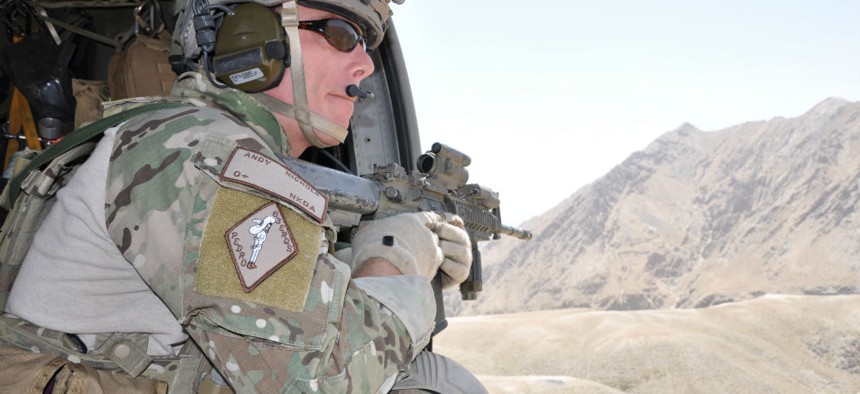Wired clothing could save troops from frostbite and bulky gear
The Natick Army Research Center in Massachusetts is working on a nanowire heating technology to keep soldiers warm with less bulk.
Cold weather gear can be heavy and bulky, making it harder for soldiers to operate weapons and equipment. Soon, soldiers may be able to replace winter layers with a simple heated coating on their uniforms, which would increase maneuverability and readiness in freezing temperatures.
The coating, which is being developed by the U.S. Army Natick Soldier Research, Development, and Engineering Center in Massachusetts (NSRDEC), is based on nanowire technology. The nanowires are so small that they are considered quasi-one dimensional, according to reports by the Massachusetts Institute of Technology, and these particular ones are grown from molten silver.
The uniform material is soaked in the silver nanowire coating for 45 minutes to an hour. Then, it is chilled at 150 degrees Celsius for another half an hour, so that the nanowires harden and fuse together, according to Paola D’Angelo, a bioengineer with NSRDEC.
The high surface area to volume ratio of the nanowires and their size make them ideal conductors because they are too small to have the flaws of traditional silicon conductors, for example. Once bonded, an electrical current spreads easily through the nanowires.
So far, the NSRDEC researchers are working with polyester and polypropylene materials for the first step of applying the coating to soldiers’ gloves, according to a press release. However, D’Angelo reports that the next phase will likely include testing on socks, and then eventually the larger uniform.
“If we reduce the number of layers, [soldiers] still keep that dexterity that allows them to operate weapons and machinery,” explained D’Angelo.
The energy source for the heated nanowire coating will most likely be a new, flexible battery being developed by researchers at the University of California, San Diego. According to their reports, the coating requires only about half a volt to three volts of energy.
The battery in development is the size and weight of a piece of tape, according to the D’Angelo. It will likely be worn within the cuff of the glove, she explains.
“You can flex it and bend it and stretch it and it still performs the same,” said D’Angelo. “We obviously want to try to avoid using battery packs because we don’t want to add any weigh to the soldier.”
However, the nanowire system is not solely reliant on battery power. If the battery dies mid-operation, the nanowires will use their natural conductivity to absorb and disseminate the soldier’s own body heat.
“Maybe a 10 to 15-degree difference would benefit the soldier and would make it comfortable for them in such a way that they don’t have to wear so many layers,” said D’Angelo. It is a noble goal that is still a few years away, she continued, however the next generation of cold-weather soldiers may be able to wear silver nanowires, instead of three bulky layers.




